Product feed as the first step to effective e-commerce
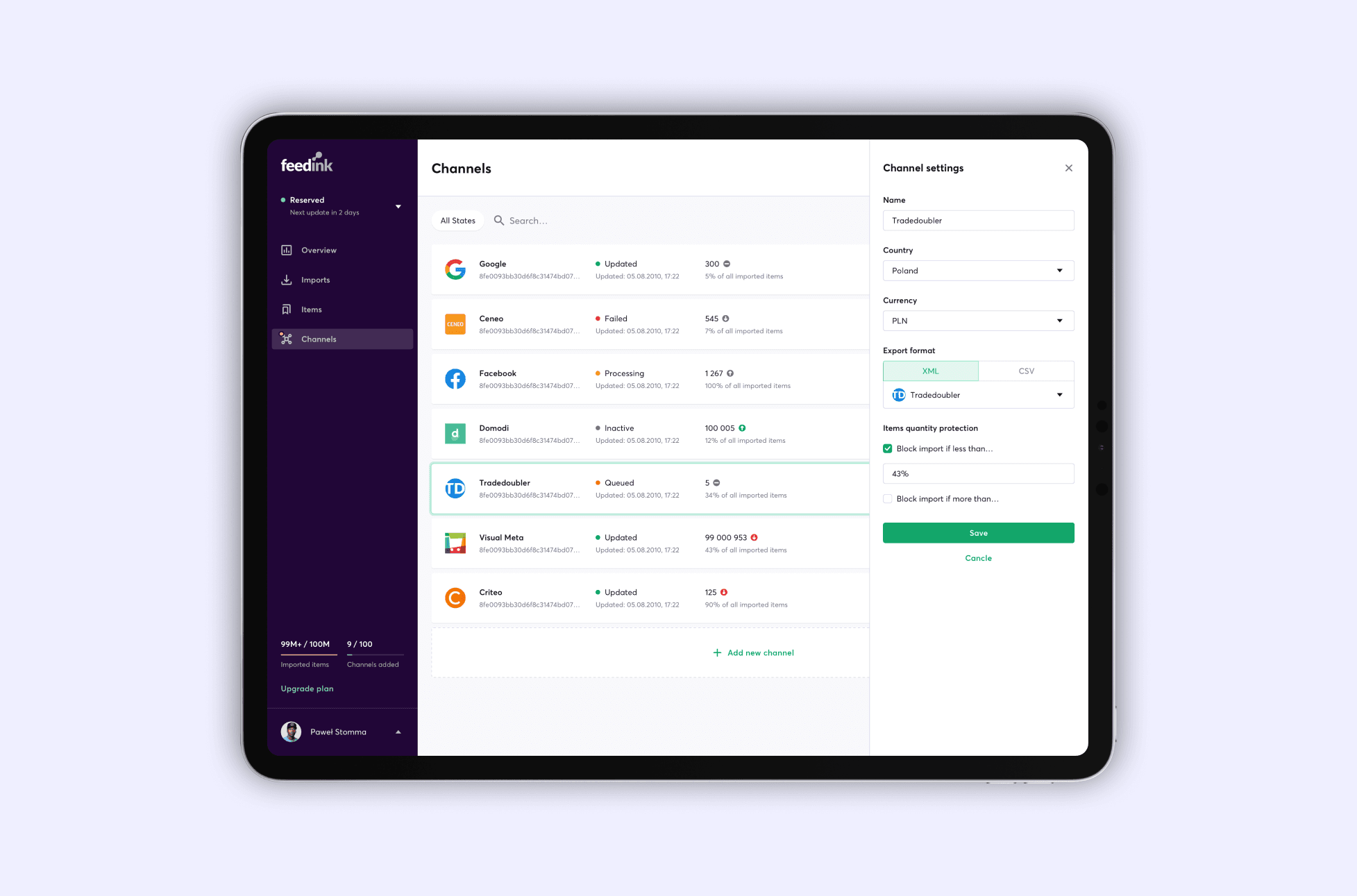
Overview
Feedink is a software provider specialising in product feed management, supporting online shops to integrate their offering across hundreds of channels. The company offers sellers new opportunities to increase their revenue by providing advanced product feed management features.
The client found itself at a crossroads after a decade of successful operations. In the midst of a demanding market and the challenging circumstances of a global lockdown, Feedink recognised the need to revamp its product offering to meet the evolving needs of its customers. The plan was to develop a new app with many new features. With a clear vision and renewed purpose, Feedink embarked on a transformational journey with Autenitka.
The Challenge
Feedink had long been catering to clients with diverse product feed management needs. Their existing solution had served them well over a decade. As the market evolved, customer demands shifted, and the company recognised the need for a modernised approach.
The main challenges included:
Complexity
The need to design a more advanced application for product file management.
Customisation
The new application had to accommodate both standard features and customisations as per each client's unique requirements.
Efficiency
The client demanded a quick turnaround, which required a streamlined and efficient development process.
A product needed a makeover and an upgrade to meet the demands of the evolving market, falling short in terms of scalability and flexibility for Feedink customers.
The company successfully overhauled its product, offering a more efficient and customisable solution that met the needs of a rapidly changing market.
Our work
To meet the project's unique challenges and design a complex application, we employed a systematic approach.
Domain familiarisation
We initiated the project by designing a landing page for the client. It allowed us to understand the niche domain of product feed management, ensuring that we could meet the client's requirements effectively.
For example, we found that online stores, especially those run by larger companies, manage extensive product catalogues. These catalogues encompass many products, each with multiple attributes such as names, images, variants, and translations. The feeds are not confined to a single platform but must be displayed across various channels, including social media platforms like Facebook, search engines like Google, and the company's online store. Any discrepancies or typos in the product information could lead to confusion and adversely affect sales.
Also, within multi-channel sales, the synchronisation of stock levels is crucial. If a product is sold through one channel, the other channels must reflect the updated stock status. At the same time, each sales channel has its own unique characteristics and requirements. Adapting the product information to match the nuances of each channel is critical to presenting products effectively and attracting customers.
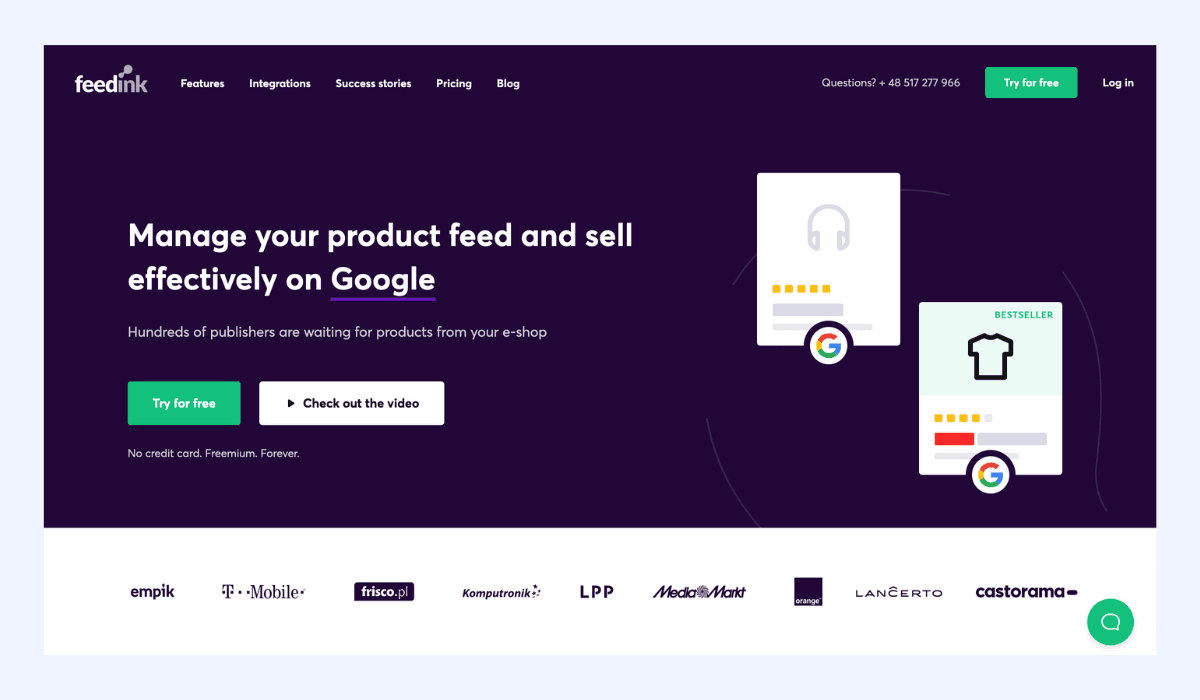
Strategic design and scope definition
Instead of relying solely on high-fidelity mockups, we approached the application design with the specific needs and complexities of the domain in mind. We dissected the application into distinct sections based on our domain knowledge. These sections were not arbitrary but were carefully identified to address key functionalities and challenges within the product feed management sphere.
Recognising that not all sections were equally important, we assigned weights based on their significance in meeting the client's objectives. This allowed us to focus on the critical aspects of the application and allocate resources effectively.
With the sections outlined and weighted, we defined the project's scope, ensuring it aligned precisely with the client's requirements and market demands.
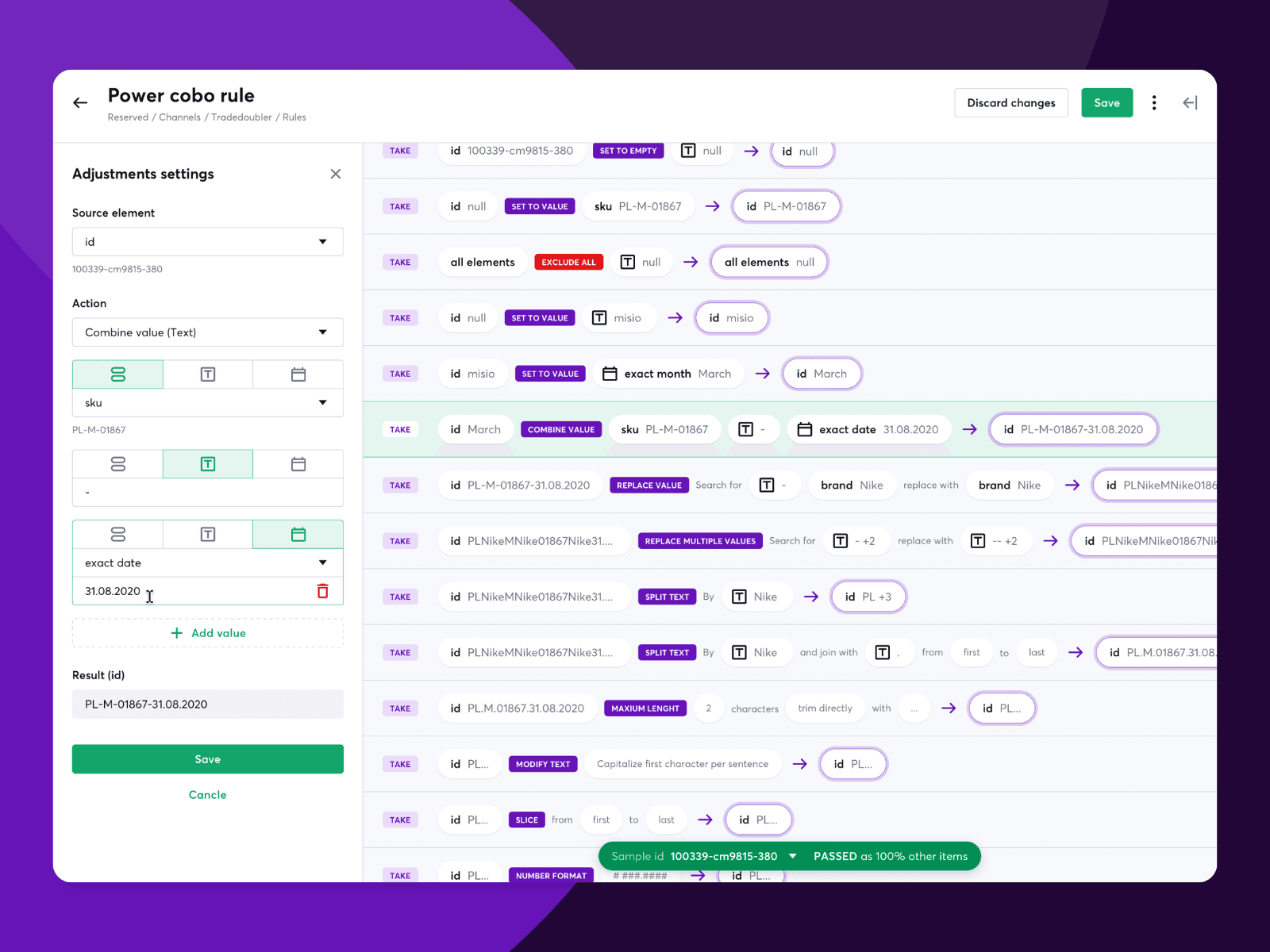
Design system
In approaching the design and development process, we recognised that this was not an application for a broad, generic audience. It was specialised, serving a niche market. Feedink’s clients didn't demand one-size-fits-all solutions. Instead, they valued customisations to align with their unique needs.
We leveraged the power of design systems to address this duality of specialisation and customisation. By utilising established design patterns within a systematic framework, we could efficiently cater to end users' specific needs.
We adopted a design system that effectively addressed 80% of the requirements-related issues. However, for the remaining 20%, we opted for a more personalised approach, which helped us avoid a one-size-fits-all strategy and ensured customised solutions when necessary.
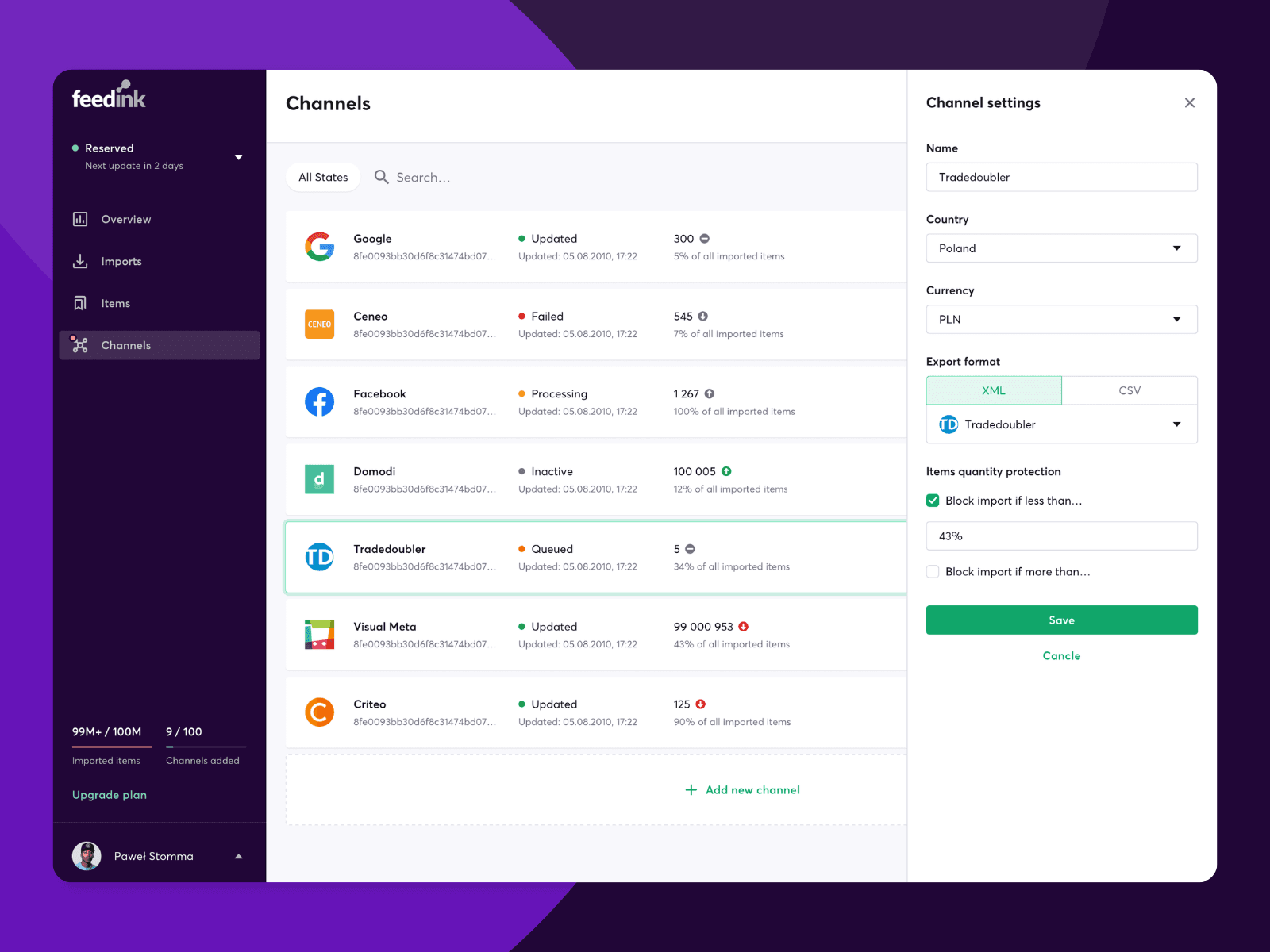
Data mapping
One of the most challenging aspects was mapping diverse client data to a standardised system. It involved bridging the gap between raw data and Feedink's requirements, which demanded a profound understanding of each client's unique dataset.
In this domain, it's essential to recognise that every client may have a custom product file. Each file has its own distinct characteristics, making it crucial for Feedink to visualise that data in a specific way for effective application functionality. While the majority of cases aligned seamlessly with standard requirements, there was always the critical 10% that diverged from the norm. It was in this diversity that the power of data mapping became apparent.
Data mapping, a custom process, emerged as a crucial step in achieving synchronisation. It wasn't something that could be solved through design iterations or simple replication. It required a deep understanding of individual client needs and the finesse to fine-tune the standard system to accommodate these unique demands.
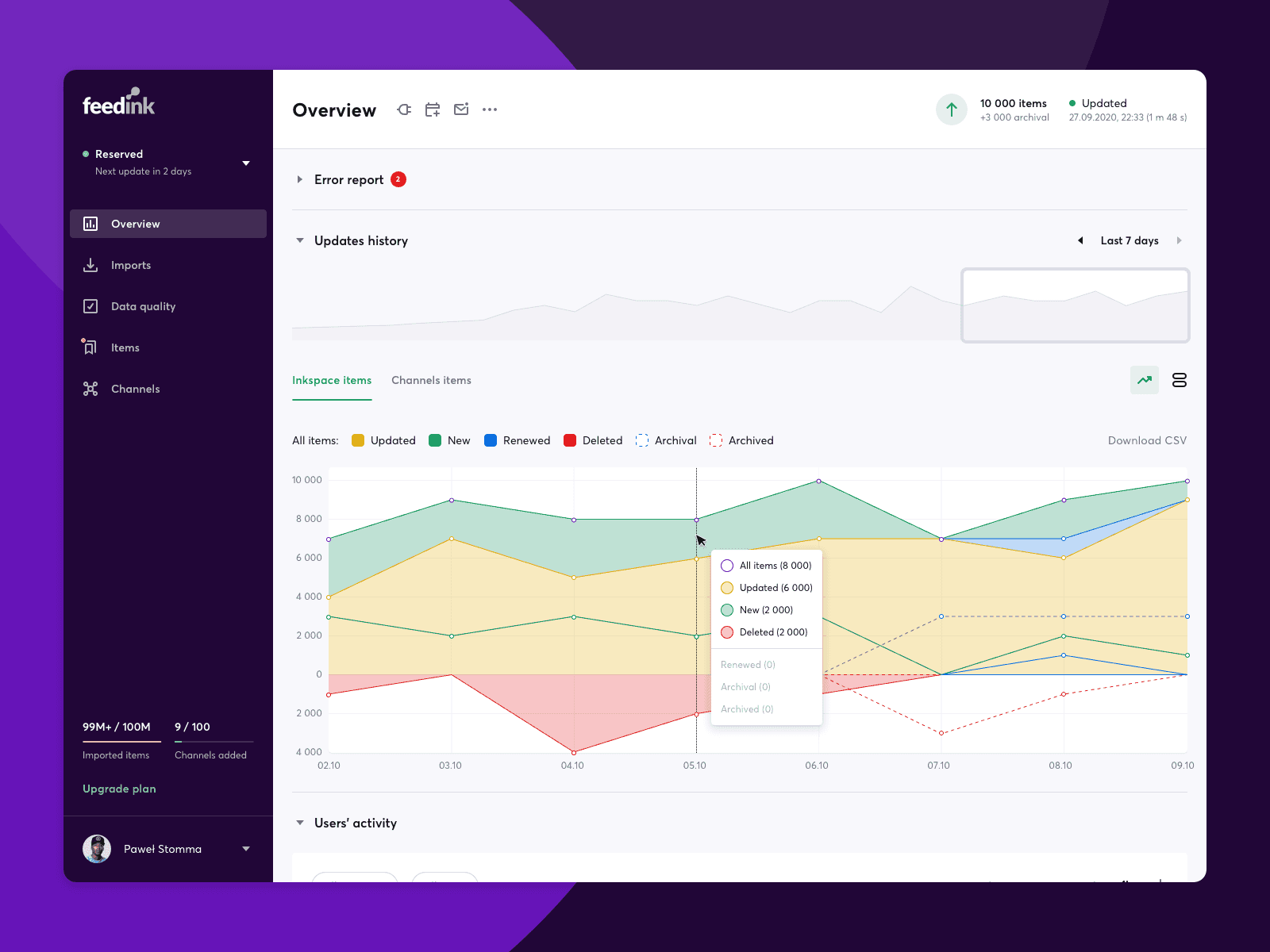
Collaboration and communication
We maintained a close relationship with the client throughout the project, conducting workshops and hands-on collaboration to ensure the design met their specific needs.
In addition to the core development of Feedink's product feed management application, our project yielded valuable extra deliverables. We crafted an engaging product landing page to introduce the application to potential users and we produced an explanatory video that effectively communicated the application's functionality and advantages.
Enhanced efficiency: With the new application, 80% of requirements could be covered using a standardised design system, reducing development time and effort.
Customisation: Feedink could now efficiently accommodate 20% of customer-specific needs.
Streamlined Product Management: The new application provided centralised product information management, allowing clients to manage and distribute their product feeds to various channels with ease.
Scalability: The revamped system allowed for adding new functionalities and updates with greater ease, making it more adaptable to future needs.
